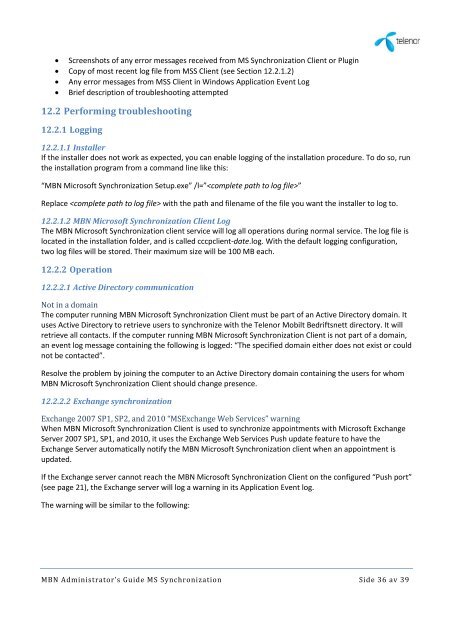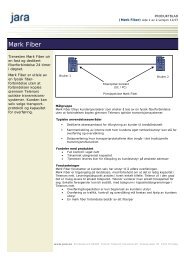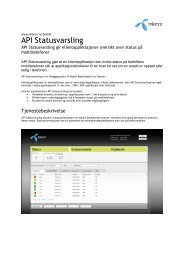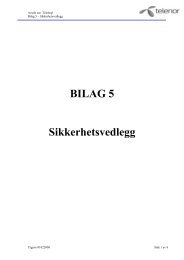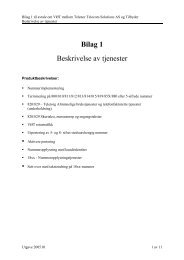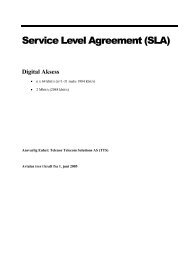MBN Administrator's Guide MS Synkronisering - Telenor
MBN Administrator's Guide MS Synkronisering - Telenor
MBN Administrator's Guide MS Synkronisering - Telenor
- No tags were found...
You also want an ePaper? Increase the reach of your titles
YUMPU automatically turns print PDFs into web optimized ePapers that Google loves.
Screenshots of any error messages received from <strong>MS</strong> Synchronization Client or Plugin Copy of most recent log file from <strong>MS</strong>S Client (see Section 12.2.1.2) Any error messages from <strong>MS</strong>S Client in Windows Application Event Log Brief description of troubleshooting attempted12.2 Performing troubleshooting12.2.1 Logging12.2.1.1 InstallerIf the installer does not work as expected, you can enable logging of the installation procedure. To do so, runthe installation program from a command line like this:“<strong>MBN</strong> Microsoft Synchronization Setup.exe” /l=””Replace with the path and filename of the file you want the installer to log to.12.2.1.2 <strong>MBN</strong> Microsoft Synchronization Client LogThe <strong>MBN</strong> Microsoft Synchronization client service will log all operations during normal service. The log file islocated in the installation folder, and is called cccpclient-date.log. With the default logging configuration,two log files will be stored. Their maximum size will be 100 MB each.12.2.2 Operation12.2.2.1 Active Directory communicationNot in a domainThe computer running <strong>MBN</strong> Microsoft Synchronization Client must be part of an Active Directory domain. Ituses Active Directory to retrieve users to synchronize with the <strong>Telenor</strong> Mobilt Bedriftsnett directory. It willretrieve all contacts. If the computer running <strong>MBN</strong> Microsoft Synchronization Client is not part of a domain,an event log message containing the following is logged: “The specified domain either does not exist or couldnot be contacted”.Resolve the problem by joining the computer to an Active Directory domain containing the users for whom<strong>MBN</strong> Microsoft Synchronization Client should change presence.12.2.2.2 Exchange synchronizationExchange 2007 SP1, SP2, and 2010 “<strong>MS</strong>Exchange Web Services” warningWhen <strong>MBN</strong> Microsoft Synchronization Client is used to synchronize appointments with Microsoft ExchangeServer 2007 SP1, SP1, and 2010, it uses the Exchange Web Services Push update feature to have theExchange Server automatically notify the <strong>MBN</strong> Microsoft Synchronization client when an appointment isupdated.If the Exchange server cannot reach the <strong>MBN</strong> Microsoft Synchronization Client on the configured “Push port”(see page 21), the Exchange server will log a warning in its Application Event log.The warning will be similar to the following:<strong>MBN</strong> Administrator’s <strong>Guide</strong> <strong>MS</strong> Synchronization Side 36 av 39


